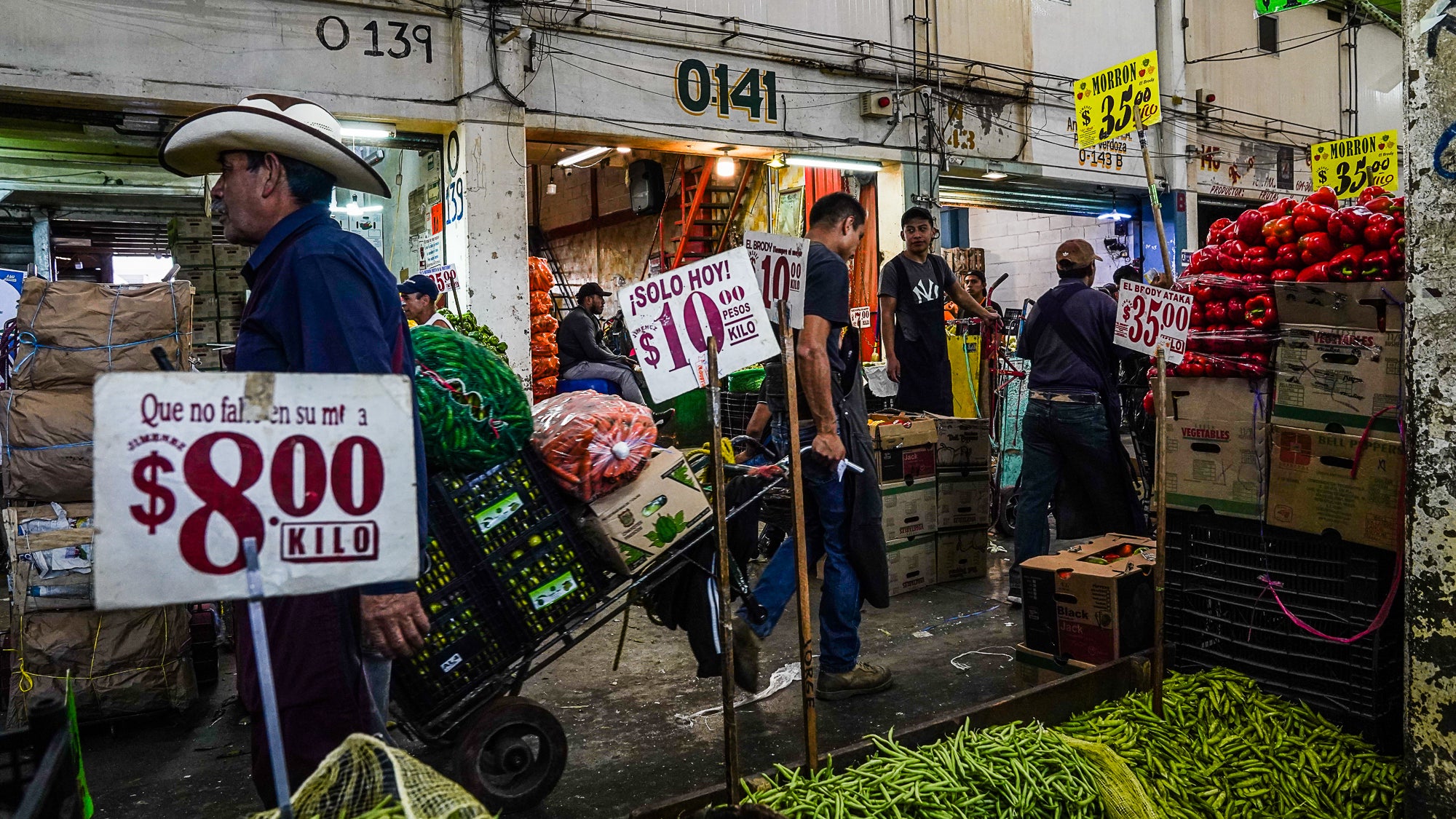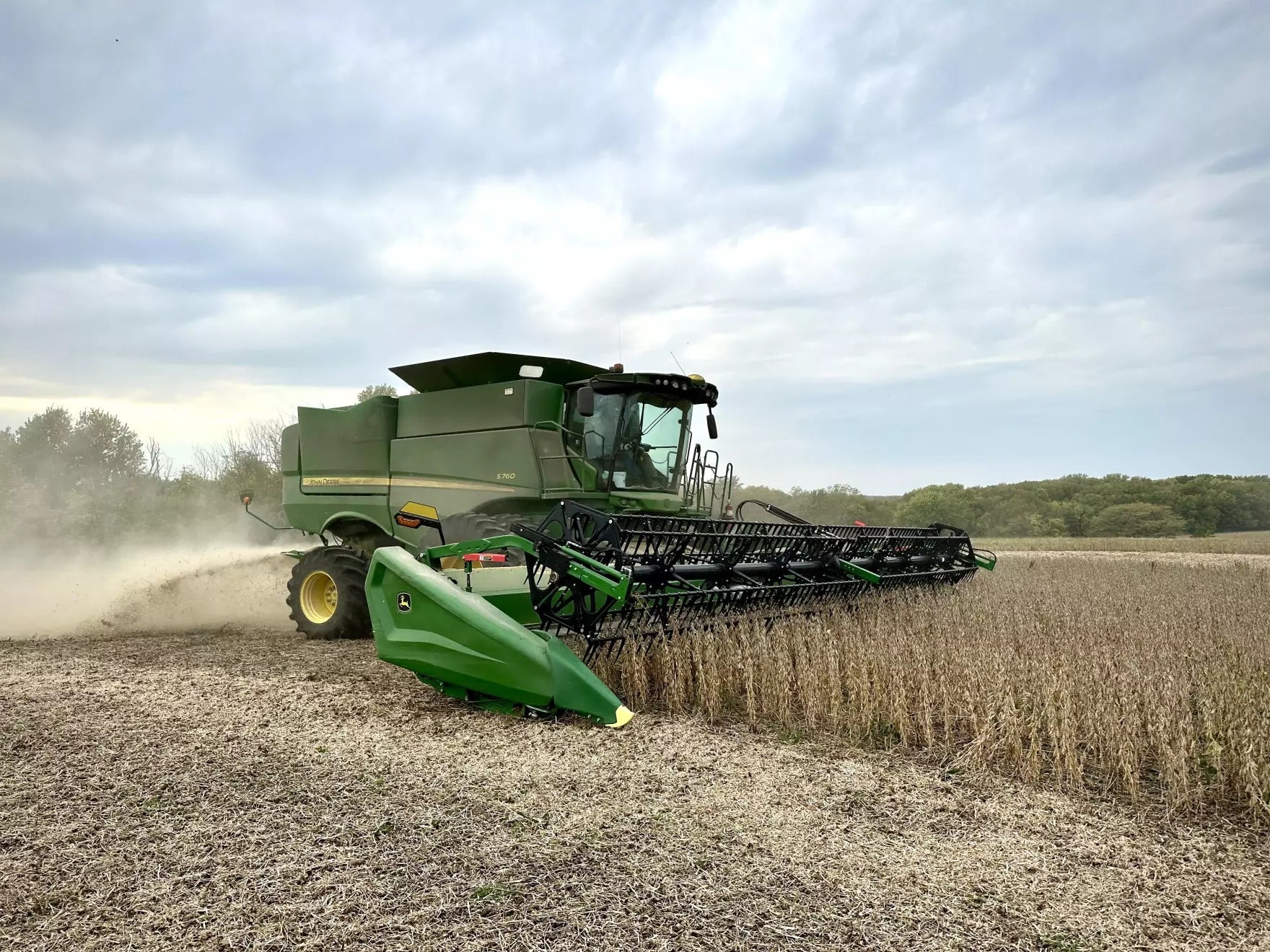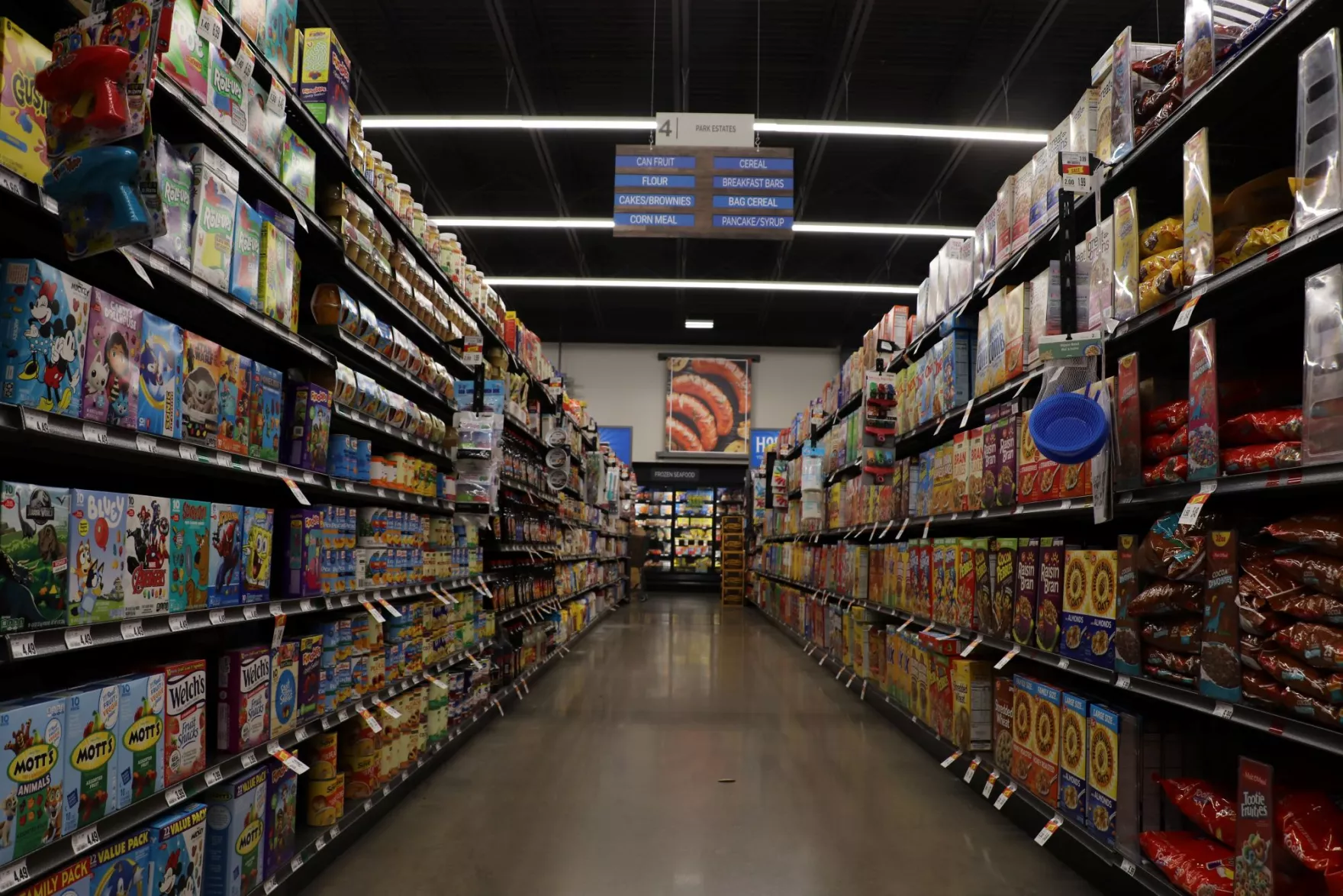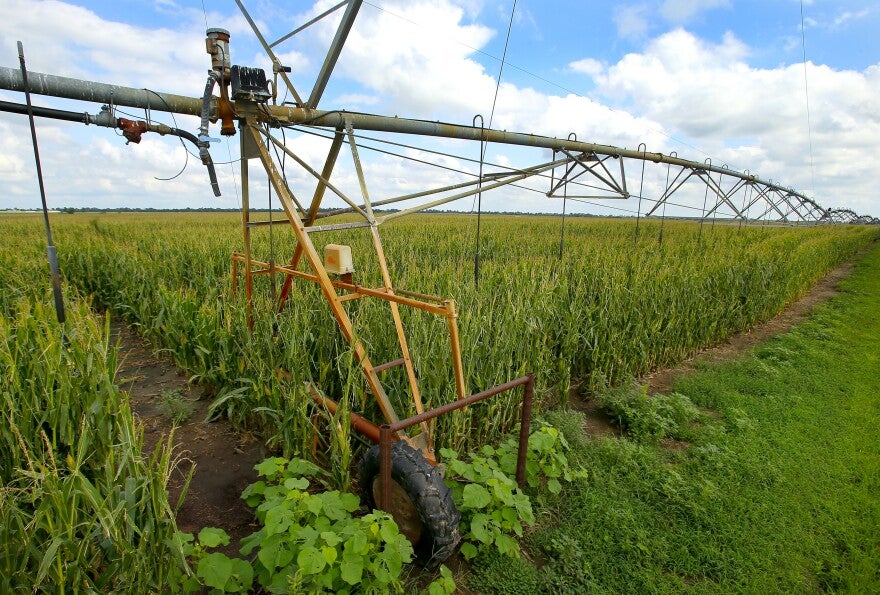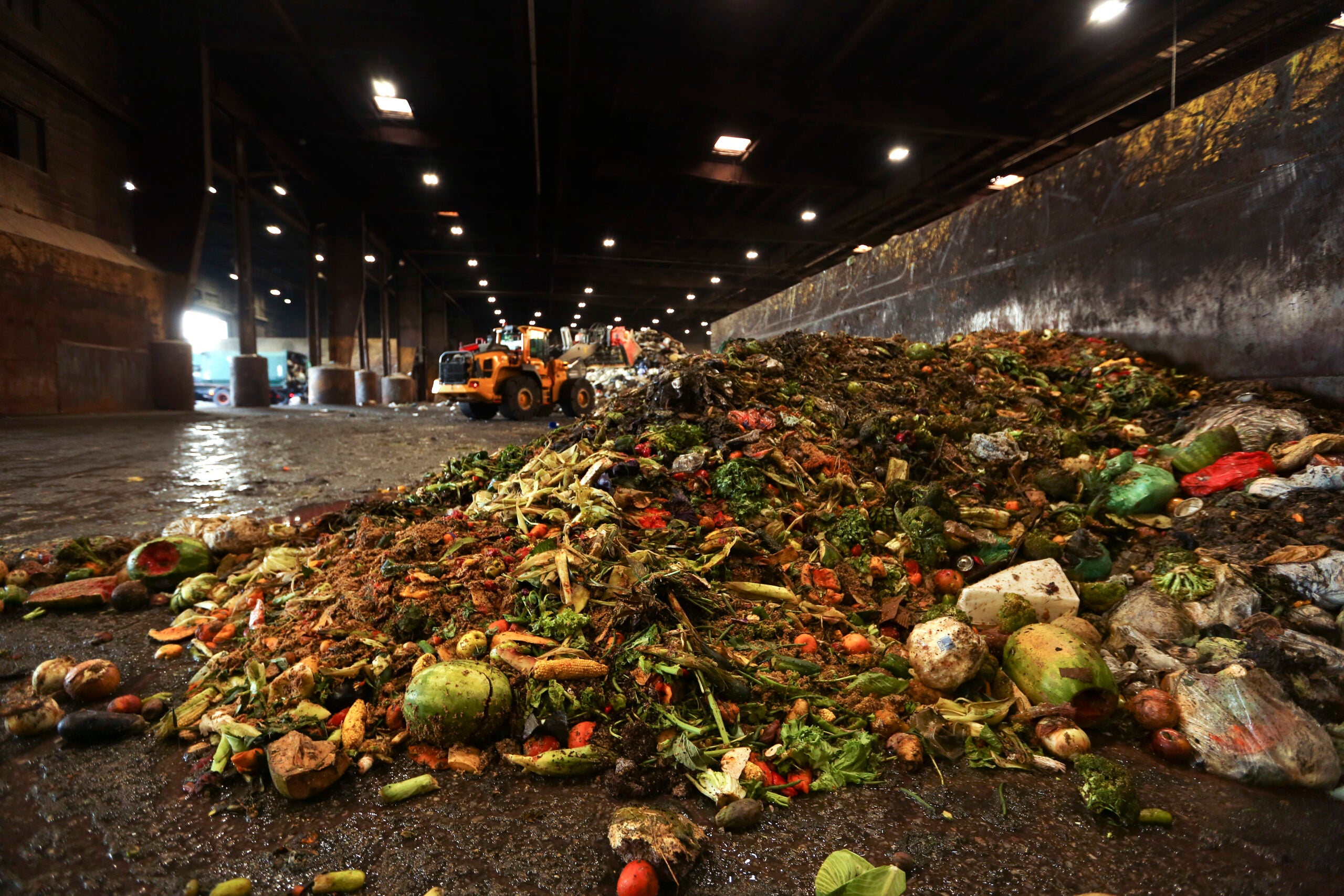MEXICO CITY — The Central de Abastos, with more than half a million daily visitors, feels more like a city than a market. Stretching across 800 acres on the eastern side of the Mexican metropolis, this wholesale produce market is the machine that feeds tens of millions of people every day.
It is also a huge source of food waste, with hundreds of tons of unsold vegetables and fruit consigned to dumpsters at the close of each market day. But since 2020, the government-run Central de Abastos has pioneered an approach to redirecting some of that unused produce into the mouths of the hungry — a program that has contributed to reducing the market’s daily food waste by 24% and delivered almost 800 tons of food to soup kitchens.
From the early hours of dawn, this wholesale bazaar is a hive of activity as buyers from markets far and wide come to select produce for the day’s business. Walking around the market can be hazardous, as 19,000 workers race dollies and wheelbarrows loaded with crates between produce stands and trucks.
News with a little more humanity
WPR’s “Wisconsin Today” newsletter keeps you connected to the state you love without feeling overwhelmed. No paywall. No agenda. No corporate filter.
“Thirty to 40,000 tons of food is sold here daily,” says Graciela de Paz Fuentes, the director of innovation and projects at the market for Mexico City’s government. “Products arrive from every state in Mexico and 15 to 20 countries. … It supplies 356 public markets and over 900 roving markets, as well as countless mom-and-pop shops across the metropolitan area.”
This food hub also shines a spotlight on a major problem for Mexico and the world: food waste. In 2019, Mexico City officials estimated 565 tons of organic waste — everything from overripe fruit to onion skins and cut flower stems — ended up in dumpsters in the parking lots behind the Central de Abastos’ beautiful produce displays every day. Government programs, including the soup kitchen donation program, lowered that total to 428 tons per day in 2022.
And that’s just a small fraction of the food the entire country wastes each day, says Lina Pohl Alfaro, the representative of the Food and Agriculture Organization in Mexico City for the United Nations.
“Approximately 20 million tons of food is lost or wasted every year in Mexico,” she says. The FAO believes about 30% of all the food Mexico produces goes unused. This is close to the average rate of food loss and waste overall in Latin America, Pohl Alfaro says — and less than the rate in the U.S., where the U.S. Department of Agriculture estimates as much as 40% is lost and wasted.
Overripe or misshapen produce can often end up in dumpsters
It can be hard to see the waste behind the dazzling displays of produce that line the Central de Abastos. Long, wide, airy aisles run across it, each corresponding to specific fruits and vegetables. One features alternating walls of neatly stacked green and red tomatoes. Another is pungently fragrant from millions of onions and heads of garlic.
Behind thick bunches of perfectly yellow bananas hanging from steel hooks, Jorge Gutiérrez surveys the pallets of fruit his employees ferry between different storage chambers.
“We try to schedule purchases precisely so we can sell every banana,” he says.
One of the challenges is consumers’ aesthetic expectations. “Lots of people come to me and only want to buy bananas that look like they’re made of plastic,” Gutiérrez says. Crooked or unevenly colored bananas are hard to move, even at a discounted price.
In his 31 years selling bananas and watermelons at the Central de Abastos, Gutiérrez has always seen waste as a business expense, with 1% to 2% of his product spoiling before he can sell it. “I can’t lie: if fruit gets overripe, it would go to the dumpster.”
In the parking lots behind the produce displays, dumpsters fill with organic waste throughout the day, releasing carbon dioxide and methane into the atmosphere. Food systems — which include agriculture, livestock and food wasted in markets, grocery stores and by consumers — are responsible for 30% of global emissions, according to the United Nations.
While much of the waste at the market is inedible — papery onion and garlic skins, the rinds of limes and oranges — a lot of it is not. But the bruised bananas, wilting greens and crooked carrots are all destined for a landfill.
In Mexico, and much of the world, the true scale of food waste is not clear.
“Mexico does not have official figures for food loss and waste, what we have are just rough estimates,” says Pohl Alfaro.
By U.N. definition, food loss occurs on farms and in transportation, while food waste happens in markets, grocery stores, restaurants and households. As such, Mexico does not yet have hard data on loss and waste, but may have it by 2024, she says.
And the real cost of lost and wasted food must take ripple effects into account.
“The fertilizers, the farmland, the energy, and most of all, the water used to produce this food is also wasted,” Pohl Alfaro says.
The market is turning wasted produce into meals for those who need them
When De Paz Fuentes and other Mexico City officials noticed hundreds of tons of food going to waste at the market every day, “We knew we had to urgently put mechanisms in place to address this,” she says.
The FAO partnered with the Central de Abastos to turn wasted food into more meals for people who need them, some of the 24 million Mexicans who don’t have enough to eat every day.
“We’re trying to foster a culture of sustainability and donation,” says De Paz Fuentes. “We go stall to stall through the market to gather donations and try to teach vendors the principles of reusing and recycling everything we can.”
Gutiérrez is one of the vendors taking part in the program.
“Now, if I see I have too many watermelons at peak season and won’t be able to sell them, I call the Itacate,” he says.
Itacate is the name of a government-run warehouse at the far end of the market, a word derived from the Indigenous Nahuatl language that roughly means leftovers. (It is also an acronym for a slogan the food waste reduction program promotes about innovation and transformation.)
Efforts like this at the largest wholesale market in the Americas are meaningful, says Pohl Alfaro.
“The Central de Abastos is the most important market in Latin America, and others take their cues from what happens here,” she says.
Despite best efforts, hundreds of tons of produce still go to waste at the market
When Gutiérrez makes the call, a city worker with a dolly shows up at Gutiérrez’s warehouse and takes the crates of unsold watermelons to the Itacate. From there, the food is distributed among Mexico City’s 450 soup kitchens, which serve 80,000 meals a day.
Workers from a soup kitchen load crates of onions, avocados and puny, bruised papayas and guavas into a truck. The donated food allows the soup kitchens to supplement their daily offerings with, say, an extra side of avocado or a guava agua fresca.
Just across the street from the Central de Abastos is one of the city’s largest soup kitchens. There, Leonardo Bautista, 62, is eating lunch after a morning cleaning onions and green tomatoes at the market. The soup kitchen is the only place where he can manage a hearty meal near work.
“It’s pretty expensive to eat at the market,” he explains, “about 60 pesos [$3.50], which is almost half of my daily salary.”
Some vendors tell NPR they are familiar with the Itacate program, but often still discard edible food because it’s easier to toss it in a dumpster than coordinate a donation.
More than 400 tons of organic waste still end up in the trash at the market every day.
Food waste will decrease further in coming years as the Central de Abastos brings a biodigester online, says De Paz Fuentes, which can absorb 50 tons of organic material a day. While reducing emissions, it will also produce biogas that can power city buses.
“This is all based on the idea of a circular economy,” says De Paz Fuentes, “where we waste nothing and take advantage of the great resources we have here.”
9(MDAyMjQ1NTA4MDEyMjU5MTk3OTdlZmMzMQ004))
© Copyright 2026 by NPR. To see more, visit https://www.npr.org.9(MDAyMjQ1NTA4MDEyMjU5MTk3OTdlZmMzMQ004))
